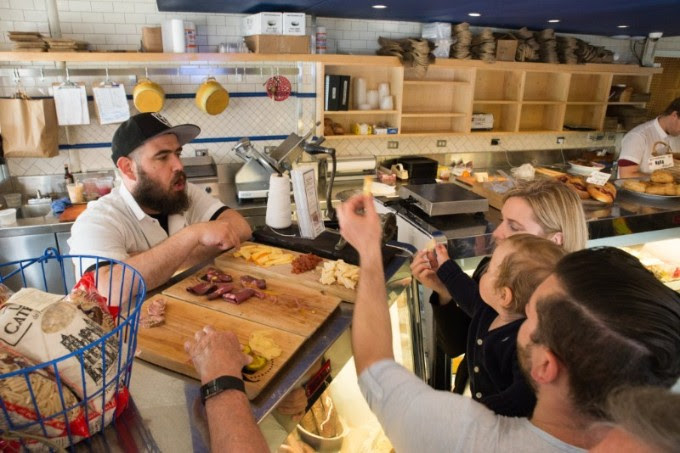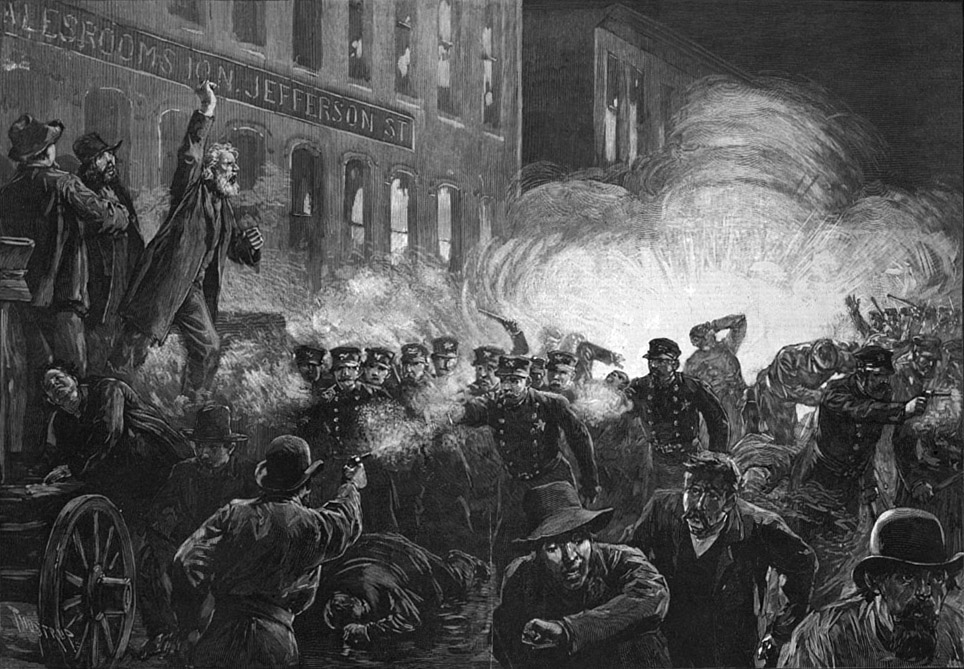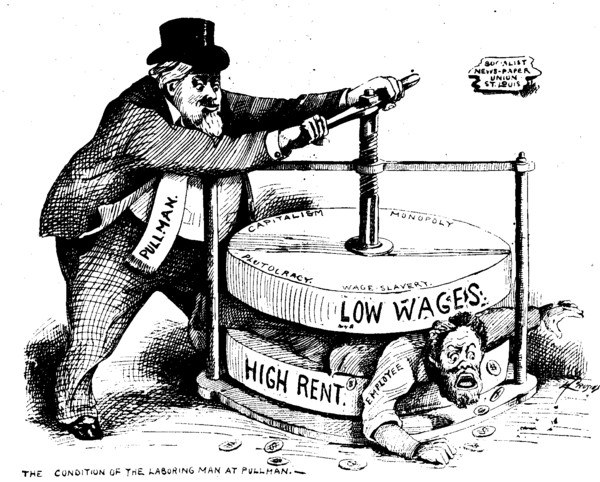Labor Day weekend is usually filled with cookouts, cold drinks, and last-minute summer trips, yet the origins of Labor Day could not be less tranquil. The federal government created the national holiday 125 years ago amidst intense and often violent strife between wealthy industrialists, workers and the law. In the 1880s and ’90s, Chicago was a hotbed of conflict over workers’ rights and labor conditions.
Most jarringly, anarchists and police violently clashed during the 1886 Haymarket Affair and strikers shook the nation’s economy to its foundations during the 1894 Pullman Strike. These two local incidents led directly to the creation of two rival holidays with different socio-political outlooks. Radical labor activists created May Day, an International Workers Day suffused with socialist rage at an unjust world. Yet today most Chicagoans have forgotten that more radical holiday and honor workers on Labor Day instead, celebrating with a peaceful holiday of grilling, drinking and relaxing.
About Chicago Detours
We research stories from Chicago history, architecture and culture like this while developing our live virtual tours, in-person private tours, and custom content for corporate events. You can join us to experience Chicago’s stories in-person or online. We can also create custom tours and original content about this Chicago topic and countless others.

I cover some of this history on some of our custom private tours of downtown and Chicago neighborhoods. We can discuss this era at the tour’s conclusion in the Haymarket Brewery and Pub. The pub’s name, drinks, and decor commemorate one of the (literally) explosive moments in the origins of Labor Day. Since this is the 125th anniversary of the Pullman Strike and the first national Labor Day, now is a great time to delve into Chicago’s connection to the origins of Labor Day.
Industrialization in Chicago Leads to Radical Movements
The origin of Labor Day, a holiday celebrating working people, of course has its roots in industrialization. In the 1800s, hundreds of thousands of people moved to Chicago to work in the booming factories, stockyards and shipping centers. These workers soon demanded more from their bosses than paltry wages. They formed labor unions, pushing for higher wages and better working conditions.
Notably, some workers and writers took their agitation much further than unionization. Chicago was home to radical political leaders and writers, including anarchist agitators like August Spies. They argued that industrial capitalism was beyond reform. Instead of pushing for fairer conditions, workers ought to organize for revolution, topple the state, and institute a new world order based on free and willing cooperation and egalitarianism.
Anarchists were, by definition, ready to commit spectacular acts of violence to achieve these ends. The long list of anarchist assassins from this time period attests to this. Anarchist newspapers like Spies’ Alarm openly called for violence, and the Chicago police were perfectly willing to crack some workers’ heads from time to time. The political atmosphere was ripe for mass violence.

The Haymarket Affair and the Birth of May Day
Labor leaders organized a nationwide strike in support of an 8-hour work day on May 1st, 1886. The strike continued peacefully until suddenly a skirmish broke out between picketers and scabs outside the McCormick wheat reaper works on May 3rd. Police fired into the crowd, killing two strikers.
In response, anarchists called for a protest rally in the Haymarket Square, at Randolph and Des Plaines, on May 4th. Thousands saw the headline “REVENGE!” and gathered to hear what the radicals might say. A police squadron marched into the square and ordered the tense crowd to disperse. Unsurprisingly, everything went to hell.
Some unknown figure threw a homemade bomb at the police. The blast killed at least one officer instantly. The police fired wildly into the crowd, leaving eight dead officers and at least five dead civilians (though reporters estimated dozens more).
The Haymarket Trial
Seven radicals, including all the Haymarket speakers, were indicted for the bombing. Prosecutors won convictions by simply reading aloud the defendants’ radical political writings. Four of the men – Engel, Fischer, Parsons, and Spies – were executed in November 1885. As he was led to the gallows, Spies famously shouted: “The time will come when our silence will be more powerful than the voices you strangle today.”
The victims of the Haymarket Affair became martyrs. Workers of the world united behind their sacrifice and May 1st became International Workers’ Day. Also known as May Day, it honors what happened here in Chicago. Instead of being the origins of Labor Day, the Haymarket created a more radical and international holiday. Every year, millions of people around the world honor workers on May 1, commemorating events that happened in Chicago over 125 years ago. America’s workers’ holiday Labor Day, has a different Chicago origin story though.
The Pullman Strike and the Origins of Labor Day

Labor strife in Chicago didn’t cease with the Haymarket Affair. The eyes of the world turned back to Chicago in 1894, when workers crippled the American rail system. The Pullman Strike began when workers in the eponymous factory town had their wages cut, but not their rent. This struck workers as deeply unfair, since the Pullman Company both paid their wages and owned their homes. Their shutdown halted all train traffic west of Detroit, since Chicago was the epicenter of American railways.
The Federal government eventually ended the strike by force, using soldiers to enforce a court order. To allay the resultant PR nightmare, President Grover Cleveland and Congress created a new holiday that celebrated the American worker: Labor Day. The new national holiday became law just six days after the Pullman Strike was violently suppressed in Chicago.
Why Labor Day and not May Day?
One should note that this celebration was not intended to imply that the government was acquiescing to the the demands of organized labor. It was paternalistic benevolence, not equitable agreement. The new holiday’s timing proves this. America does not celebrate its working people on International Workers Day in May, a holiday associated with radical beliefs. Instead, this new government-sanctioned Labor Day would set aside the first Monday in September to celebrate American workers. Cleveland, like every other prominent American of his day, wanted to suppress the radical politics of May Day and its violent anarchist associations.
In some respects, the origin of Labor Day comes from the suppression of the radical politics of May Day. Even more remarkably, these rival holidays both evolved in response to labor strife in Chicago. The City of the Big Shoulders carries the half-forgotten weight of two rival holidays. So when I enjoy the long weekend this year, I’ll take a moment to reflect on the Chicagoans who fought so hard 125 years ago for the basic workers’ rights we take for granted today.
– Alex Bean, Content Manager and Tour Guide
ABOUT CHICAGO DETOURS
Chicago Detours is a boutique tour company passionate about connecting people to places and each other through the power of storytelling. We bring curious people to explore, learn and interact with Chicago’s history, architecture and culture through in-person private group tours, content production, and virtual tours.












